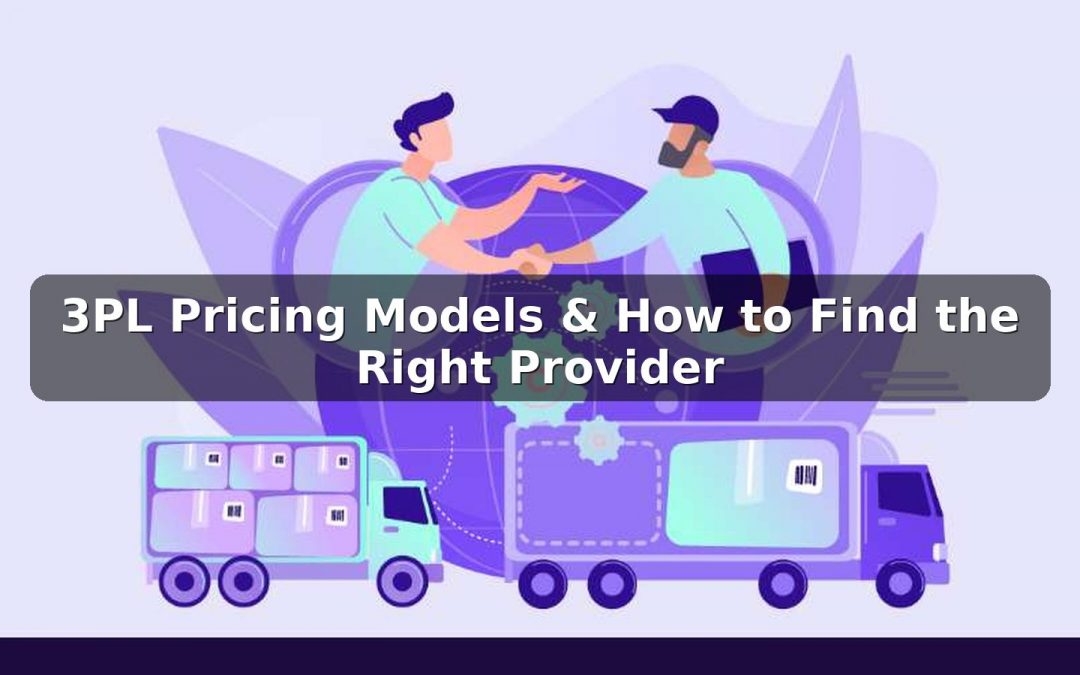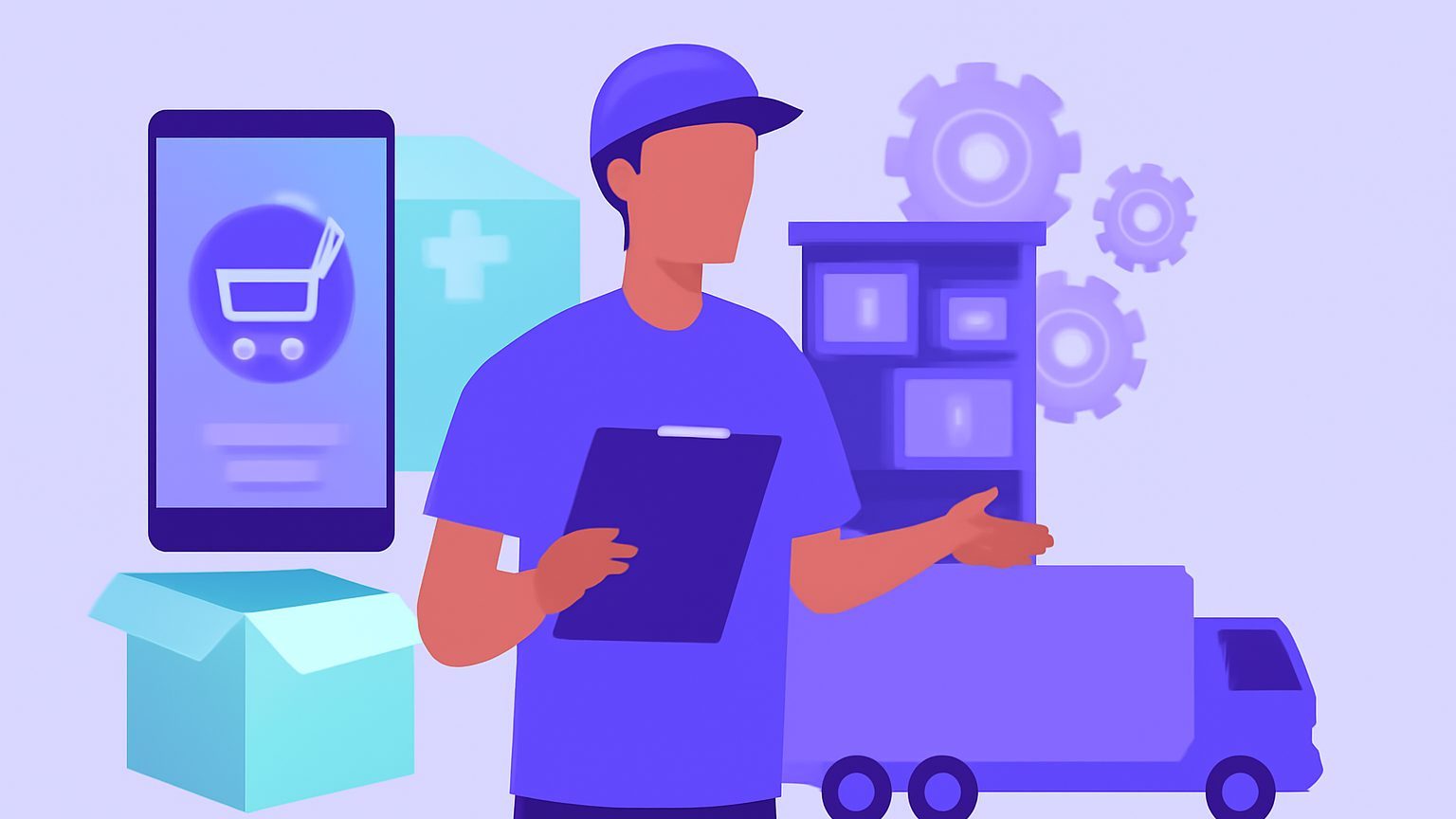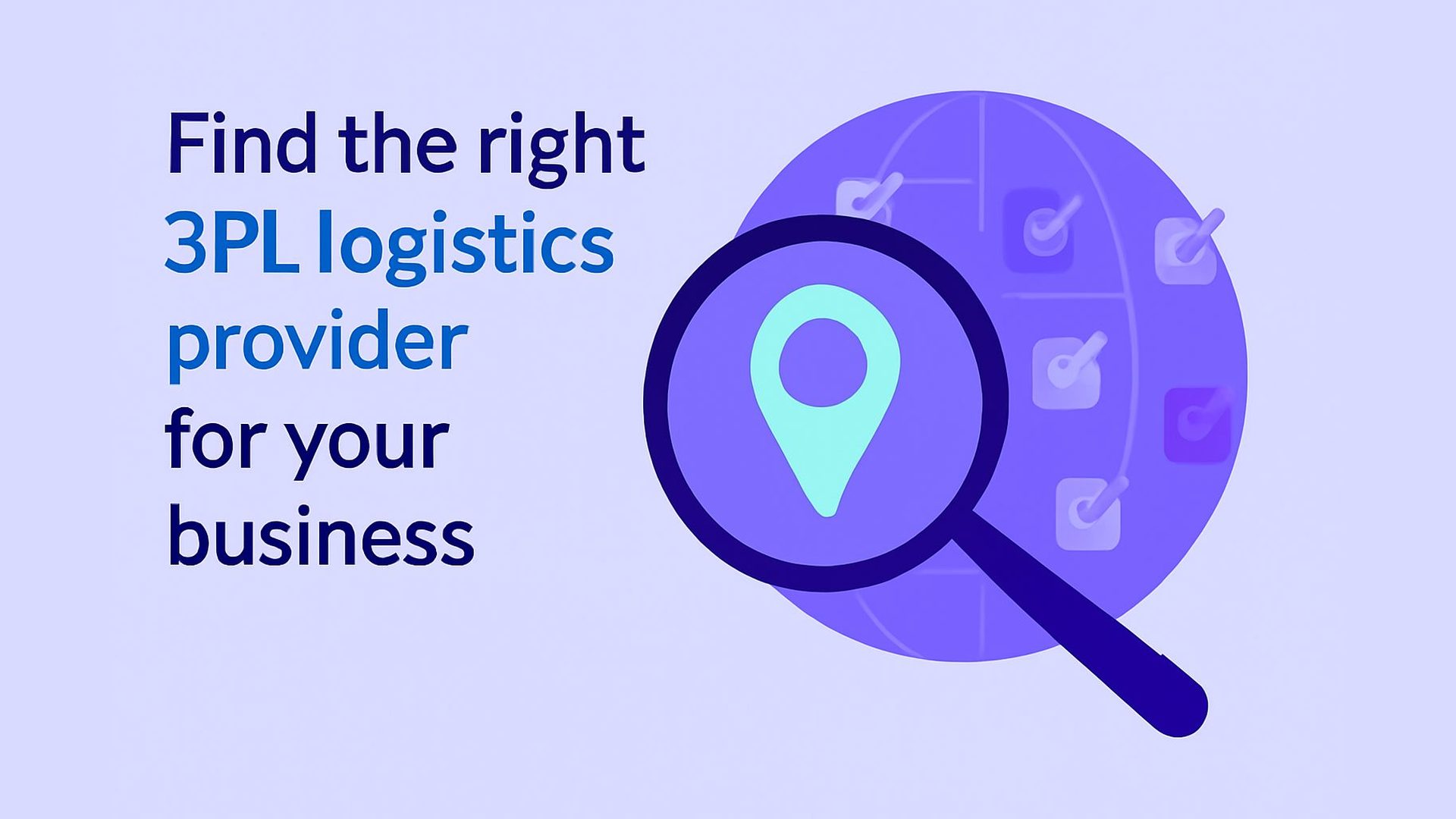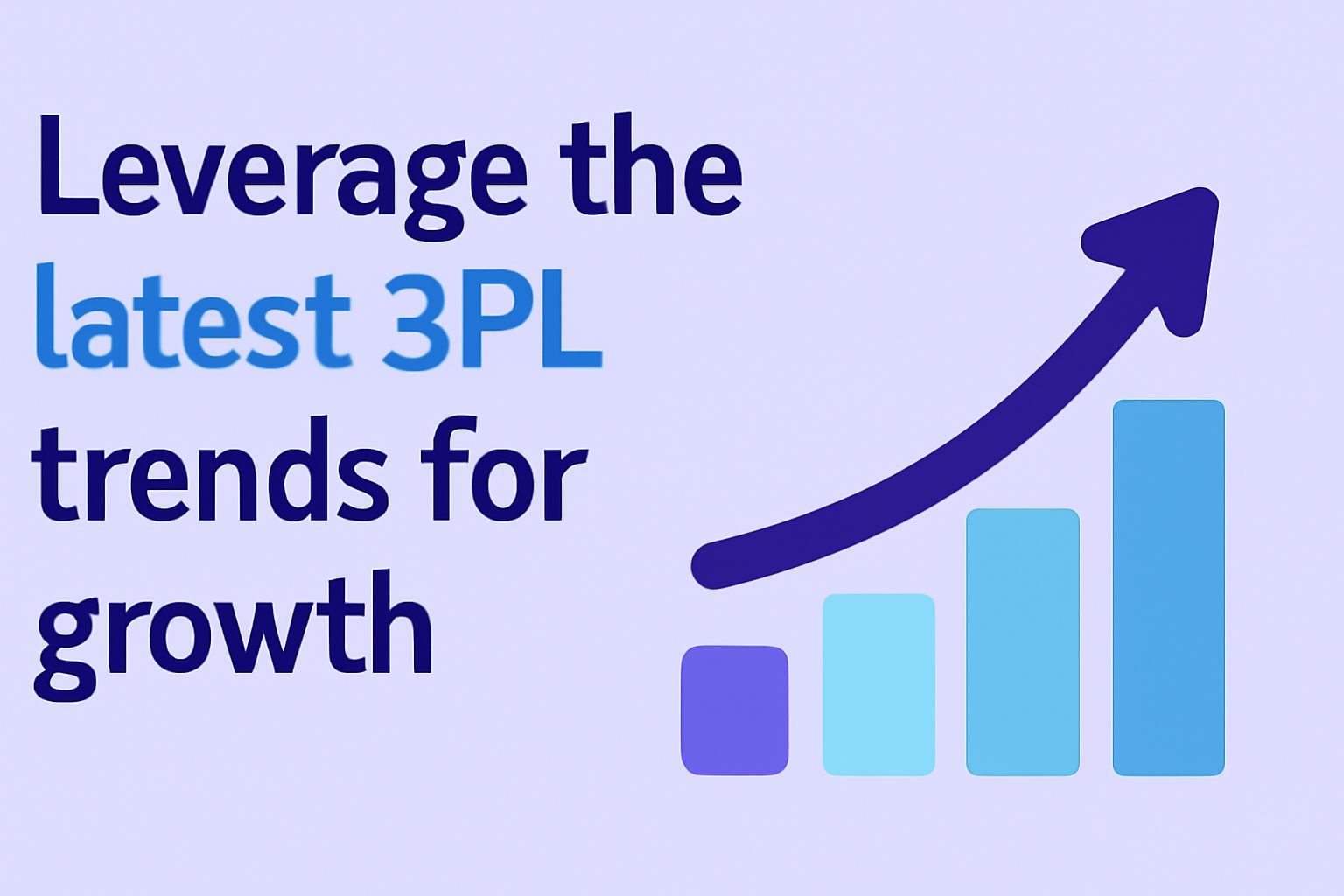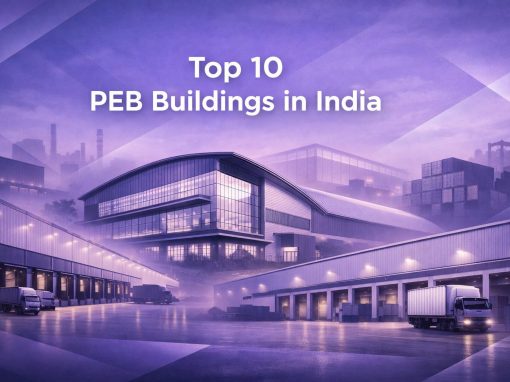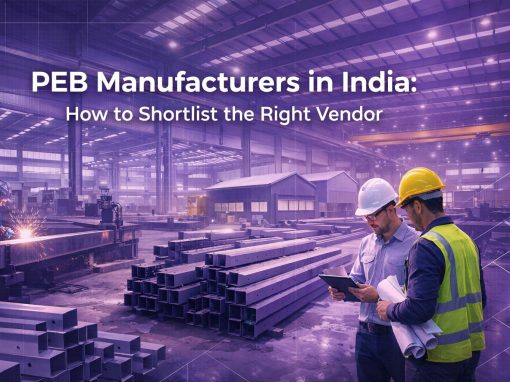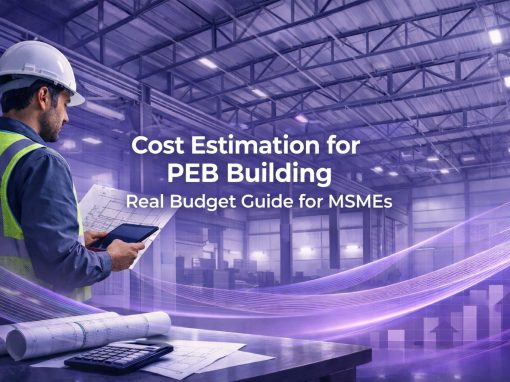Table of Contents
- What is 3PL?
- Top Benefits of 3PL Services for MSMEs
- Key Factors in Choosing the Right 3PL Provider
- Common 3PL Pricing Models
- 3PL Cost Transparency and Hidden Fees
- Which 3PL Pricing Model is Best for Your Business?
- Evaluating ROI Beyond 3PL Cost
- Future Trends in 3PL and Pricing
- Latest Trends in the 3PL Industry
- Conclusion
If you need to move goods from one place to another, you need logistics services for your business. As a business owner, whether you choose to build in-house logistics capabilities, or outsource logistics operations to an external logistics company, hiring a third-party logistics service provider (3PL) can be beneficial.
What is 3PL Service?
3PL companies are external entities that manage logistics and order fulfilment for your business – from receiving goods, to inventory management and warehousing, packing, delivery and returns (i.e., reverse logistics).
To understand the process of how 3PLs work, let us look at a simple 3PL logistics example.
An online order is placed for festival decorations (e.g., candles, string lights, balloons etc.). At the 3PL warehouse, an agent will:
- Check stock of inventory (e.g., candles, bells, string lights, diyas, balloons, stars, flowers etc.)
- Identify items ordered (candles, string lights, balloons etc.)
- Validate order details (e.g., quantity, type, brand), pack and label the order (i.e., address, invoice)
- Coordinate, check for quality, and get the order shipped (can be via contracted partners if order is in a different city)
- Track delivery status and provide update to the merchant
- Schedule pick-ups in cases of returns (reverse logistics)
Top Benefits of 3PL Services for MSMEs
Working with 3PL companies can be advantageous for MSMEs. These logistics providers undertake end-to-end responsibility of timely delivery to ensure customer satisfaction for your business.
Cost-efficiency
Managing fleets and trucks, manpower, warehouse infrastructure can be expensive and a hassle. For micro and small businesses it can lead to inefficiencies and quality issues. 3PL providers can help here. They maintain their own infrastructure and charge you for their services. This helps you to save on costs and avoid overspending. Also, considering their wide network and volumes, they almost always offer better rates than what in-house expenses would amount to.
Focus on Core Business Competencies
Your business has professionals performing different tasks based on their skills and capabilities. Production, sales and marketing, branding etc. are your core competencies. Similarly, 3PLs are professional logistics providers, and goods transportation is their core competency. When you hire a 3PL company, you have the time to focus on your key skills, and outsource logistics to those who can manage it efficiently.
Leverage Benefits of 3PL Warehouses
Renting warehousing space can be expensive especially if you have customers in various pin codes. 3PL providers have their own warehousing facilities (either owned, leased, or rented) in different locations. They also have contracts with freight forwarding companies and carriers. This means, when you outsource logistics services to 3PL companies, they manage inventory, warehousing and storage, and transportation without you having to invest time or money into it.
Enhance Customer Satisfaction
In many cases, your customers opinion of your brand will be based on delivery experience. Damaged packages, late deliveries, poor tracking statuses affect how your brand is perceived. For an MSME, it is a smarter move to partner with 3PL service providers to ensure smooth customer services.
Most professional 3PL providers offer quality packaging (boxes, bubble traps, fragile tags etc.) and/or custom packaging to ensure packages are not damaged. They use GPS-enabled vehicles and track status at important touchpoints and even coordinate with customers for efficient returns management process. This helps to enhance customer experience encouraging repeat orders and sales for your business.
3PL providers also have a vigorous feedback mechanism to improve processes and endeavour to improve customer services in logistics.
Manage Shipping Including Customs for Global Orders
If you are considering expanding operations to international markets, collaborating with a 3PL logistics player has its advantages. There are several 3PL logistics companies in India who operate international cargo and fleet operations, and they can help with international shipping, customs clearance, taxes and duties, international laws and compliances, and more, saving you the regulatory, shipping, and warehouse logistics difficulties for international trade.
Scale Your Business Without Worry
It is easy to scale your business when working with 3PLs as you don’t have to invest or worry about warehousing, storage, transportation or any other such responsibilities. 3PLs maintain their own infrastructure, have sub-contractors and network partners, and can add accommodate your business’ changing demands as required.
Key Factors in Choosing the Right 3PL Provider
With the right 3PL provider working with you, errors will be lesser and focus on key deliverables higher. As an MSME owner, there are several business responsibilities that require your attention – logistics need not be one of them.
Alternatively, follow these steps to find a 3PL partner for your business.
Industry Expertise
A 3PL partner who is familiar with your sector can anticipate problems and suggest tailored solutions for your business. For instance, a steel company is experienced in how to move heavy loads, while a provider that specialises in E-commerce focuses on getting things to customers quickly.
Service Range
Consider whether your business needs local distribution, pan-India coverage, or global logistics. Then choose a provider based on their network strength, delivery speed, cost-efficiency etc.
Technology Adoption
Modern logistics depends on visibility and data. Choose providers that have advanced tracking systems, real-time dashboards, and easy integration with your ERP or CRM so you can have better control and make informed decisions.
Scalability and Flexibility
Your logistics partner needs to be able to deal with business growth and seasonal spikes. Flexibility means that service never stops, even during the holidays or when entering new markets.
Reliability and Track Record
It is less risky to use a provider that has a proven track record. To see if they are consistent and trustworthy, look at their history, how reliable their service is, and their customer reviews.
Compliance
Logistics often has strict rules. Make sure your 3PL provider meets industry standards, has the right licenses, and offers insurance to cover your shipments.
Here are 7 practical steps to choose the right 3PL partner:
- Define your logistics requirements clearly: Identify services you need such as warehousing, transportation, packaging, or reverse logistics.
- Draft a detailed RFP and invite bids: Compare proposals on pricing, technology, capabilities, and service commitments.
- Run a pilot project or short-term contract: Test the provider’s performance in real operations before making a long-term commitment.
- Evaluate communication and support quality: Assess responsiveness, escalation handling, and overall service reliability.
- Negotiate flexible terms and scaling clauses: Ensure contracts allow for seasonal demand shifts and future business growth.
- Check compliance and certifications: Verify adherence to safety, insurance, and regulatory requirements for risk-free operations.
- Seek client references and case studies: Review feedback from existing customers to validate claims and service consistency.
Common 3PL Pricing Models
Pricing is very important when choosing a 3PL partner because it helps you find a balance between cost and service quality. Different providers have different pricing models that are meant to work with businesses of all sizes and shipping needs.
The table below shows the most common 3PL pricing models and when they are best used.
| Pricing Model | How It Works | Best Suited For |
| Transaction-based pricing | Charges are applied per order, shipment, or unit handled. | Businesses with fluctuating volumes or seasonal demand where pay-as-you-go is better. |
| Fixed monthly fees | A standard flat rate is charged for a set package of services. | High-volume businesses that require predictable costs and steady logistics support. |
| Storage-based pricing | Costs are based on space usage (pallet positions, square footage, or cubic metres). | Companies with significant warehousing needs or bulky inventory storage. |
| Value-added service pricing | Additional fees for tasks like labelling, packaging, kitting, or returns handling. | Businesses requiring specialised services beyond standard logistics. |
| Hybrid models | A combination of fixed fees and variable costs based on usage. | Growing businesses that need both cost predictability and flexibility. |
Cost Transparency and Hidden Fees
Working with a 3PL provider is not just about their rates. Many businesses face unexpected expenses that can significantly increase logistics costs if not identified upfront. Typical hidden charges may include fuel surcharges, minimum order fees, special handling costs, and peak-season premiums. These costs can add up, especially during high-demand periods or when shipment volumes are lower than expected.
To safeguard against such surprises, it is essential to establish a clear Service Level Agreement (SLA). An SLA outlines all costs, responsibilities, and performance expectations, ensuring both parties are aligned. By insisting on transparent pricing and documented terms, businesses can avoid disputes, maintain budget control, and build a stronger partnership with their 3PL provider.
Questions to Ask Your 3PL Provider About Hidden Fees
- Do you charge fuel surcharges and how often are they adjusted?
- Are there minimum order fees if shipment volumes fall below a certain level?
- What are the charges for special handling (fragile goods, oversized items, hazardous materials)?
- Are there seasonal or peak-period surcharges I should plan for?
- How are storage costs calculated, and are there penalties for exceeding limits?
- Are there additional fees for returns, cancellations, or urgent orders?
- What costs apply if we need custom packaging, labelling, or kitting services?
- Can you provide a detailed fee schedule upfront, with all potential add-ons listed?
Matching Pricing Models with Business Needs
Selecting the right pricing model depends on how your business operates and ships goods. Different industries and company sizes have varying logistics patterns, making some models more cost-effective than others.
The table below highlights which pricing structure best fits specific business types and why they work.
| Business Type | Logistics Pattern | Best-Fit Pricing Model | Why It Works |
| MSMEs with fluctuating volumes | Seasonal peaks and unpredictable shipment sizes | Transaction-based pricing | Pay only for what you use, avoiding overpayment during slower months. |
| High-volume businesses | Consistent and steady shipment flow | Fixed monthly fees | Predictable costs simplify budgeting and support long-term contracts. |
| Growing E-commerce startups | Irregular order flows, scaling rapidly | Transaction-based or hybrid | Flexibility to manage variable demand with some cost predictability. |
| Steel suppliers/ manufacturers | Large, stable, and regular shipments | Fixed or hybrid pricing | Better control over costs while accommodating occasional fluctuations. |
| Businesses needing customisation | Frequent returns, packaging, or labelling tasks | Value-added service pricing | Pay for specialised services without locking into higher base costs. |
Evaluating ROI Beyond Cost
When choosing a 3PL provider, it’s easy to focus only on pricing. However, the true measure of value lies in the Return on Investment (ROI) that goes beyond cost savings. A slightly higher-priced provider may deliver greater benefits if their service quality is superior.
Reliable 3PL providers can help reduce delivery delays, minimise errors, and ensure smoother operations, which directly improve customer satisfaction and retention. Over time, efficient logistics also cuts hidden expenses such as penalties, lost sales, and rework costs, making them more cost-effective in the long run.
The key is to look at value creation, not just cost minimisation.
Measurable ROI Indicators
- Delivery performance: Faster and more reliable delivery timelines.
- Error reduction: Fewer order discrepancies, returns, and damages.
- Customer satisfaction: Higher repeat purchase rates and positive feedback.
- Operational efficiency: Reduced downtime, optimised warehouse usage, and better route planning.
- Cost avoidance: Lower penalties, reduced last-minute shipping premiums, and minimised rework.
Future Trends in 3PL and Pricing
The logistics sector is rapidly evolving, and 3PL providers are adopting new models to stay competitive. Pricing is now becoming dynamic and data driven. Businesses evaluating long-term 3PL logistics partners should keep an eye on the following trends:
Tech-driven Pricing with Real-time Data
Traditional flat-rate or volume-based pricing are giving way to dynamic models powered by live market inputs. Real-time fuel costs, traffic conditions, and lane demand are increasingly factored into pricing algorithms. According to a report by Armstrong & Associates, over 65% of global 3PLs now offer technology-enabled pricing visibility, a number expected to cross 80% by 2027.
Rise of On-demand Warehousing
Just as ride-hailing transformed transport, warehousing is shifting towards flexible, pay-as-you-use models. On-demand warehousing platforms allow businesses to tap into unused storage space nationwide without long-term commitments.
AI and Predictive Analytics in Logistics Pricing
Artificial Intelligence is reshaping logistics by forecasting demand, predicting route disruptions, and setting optimised price points. Predictive pricing can help businesses lock in better rates before seasonal surges. Gartner estimates that by 2026, over 50% of supply chain organisations will rely on AI-driven analytics for decision-making, cutting costs by up to 20% through smarter pricing and planning.
Latest Trends in the 3PL Industry
As of 2025, several key trends are shaping the third-party logistics (3PL) landscape in India. By embracing them, MSMEs can enhance their logistics capabilities, reduce operational costs, and position themselves for growth in a competitive market.
Digital Transformation and Automation
The adoption of technologies such as artificial intelligence, machine learning, and robotics is streamlining operations. These innovations enhance inventory management, optimise routing, and improve order fulfillment accuracy, enabling MSMEs to operate more efficiently and reduce costs.
Sustainability Initiatives
There is a growing emphasis on eco-friendly practices within logistics. 3PL providers are integrating electric vehicles, recyclable packaging, and optimised delivery routes to minimise environmental impact, aligning with the increasing consumer demand for sustainable business practices.
Last-Mile Delivery Innovations
To meet the rising expectations for fast and reliable delivery, 3PLs are investing in advanced solutions such as drones, autonomous vehicles, and smart lockers. These technologies aim to reduce delivery times and enhance customer satisfaction, which are crucial for MSMEs competing in the E-commerce sector.
Flexible and Scalable Solutions
3PL providers are offering customisable services that allow MSMEs to scale operations according to demand fluctuations. This flexibility helps businesses manage seasonal peaks and optimise resource utilisation without significant capital investment.
Should MSMEs Opt for Regional/Localised 3PL Providers?
MSMEs can benefit from 3PL solutions tailored to their specific region. Urban and rural areas have distinct logistical challenges, including infrastructure limitations, transportation access, and delivery speed. For MSMEs operating in specific regions, partnering with local 3PL providers who understand these nuances can significantly enhance efficiency.
Local 3PLs often have better knowledge of regional routes, customs, and customer preferences, making them an ideal choice for businesses that need tailored logistics solutions. Moreover, smaller-scale logistics networks in particular regions can offer more cost-effective solutions, allowing MSMEs to adapt quickly to changing demands. By considering regional variations, MSMEs can optimise their logistics strategies and ensure smoother operations.
Conclusion
Choosing the right 3PL provider is not just about outsourcing logistics. It is about building a partnership that supports long-term growth. Aligning your business needs with the right pricing model ensures both cost efficiency and operational stability. Trust and transparency in agreements reduce risks and create smoother collaboration.
A reliable 3PL goes beyond moving goods; they become a strategic partner that adds value at every stage of the supply chain. In the long run, the right 3PL partnership can drive efficiency, customer satisfaction, and sustainable business success.
Need reliable logistics solutions for your business?
Tata nexarc helps businesses streamline their supply chain with trusted transporters, competitive pricing, and real-time tracking – ensuring timely and cost-effective delivery across India.
FAQs
How is a 3PL provider different from in-house logistics?
Why should an MSME consider hiring a 3PL provider?
How do 3PL and 4PL providers differ?
What types of MSMEs benefit most from 3PL services?
How can MSMEs choose the right 3PL partner?
What are the common challenges MSMEs face with 3PL providers?
How do regional or local 3PL providers add value?
What are the latest trends in 3PL that MSMEs should leverage?
Can 3PL services help with international shipping?
How can MSMEs measure the effectiveness of their 3PL provider?
Sohini is a seasoned content writer with 12 years’ experience in developing marketing and business content across multiple formats. At Tata nexarc, she leverages her skills in crafting curated content on the Indian MSME sector, steel procurement, and logistics. In her personal time, she enjoys reading fiction and being up-to-date on trends in digital marketing and the Indian business ecosystem.
